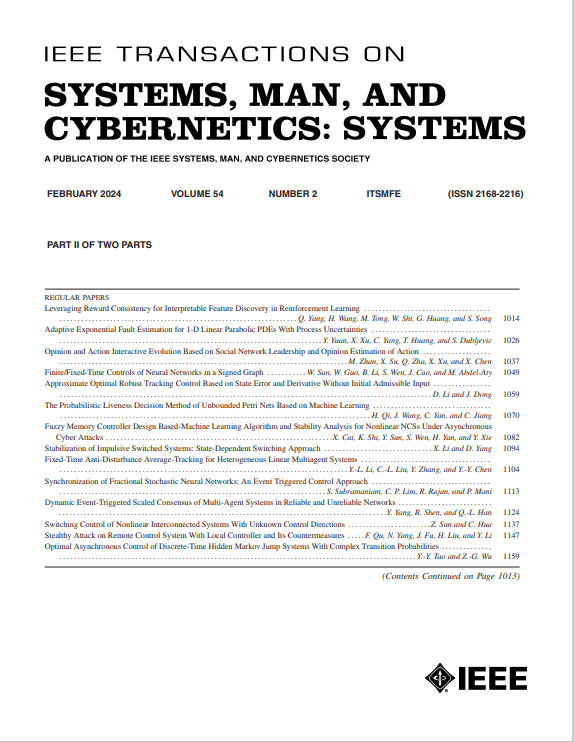Impact of Opinion-Driven Adaptive Vigilance on Virus Spread and Opinion Evolution
IF 8.6
1区 计算机科学
Q1 AUTOMATION & CONTROL SYSTEMS
IEEE Transactions on Systems Man Cybernetics-Systems
Pub Date : 2025-06-10
DOI:10.1109/TSMC.2025.3573298
引用次数: 0
Abstract
In order to investigate how different levels of vigilance affect the spread of a virus and changes in public opinion, this article introduces a network-based susceptible-exposed-infectious-vigilant (SEIV)-Opinion model. The model incorporates vigilance influence functions that depend on infection and recovery rates, which are associated with opinion states. A basic reproduction number dependent on both the viral transmission state and public opinion dynamics is constructed to analyze the conditions for virus eradication or pandemic persistence. These findings indicate that during severe epidemics, people are very concerned about the epidemic, leading to an increased vigilance, thereby significantly slowing the spread of the virus. On the other hand, during milder epidemics, people do not respond adequately to the threat of the epidemic, and thus are less vigilant and have less impact on the spread of the virus. These insights correlate closely with real-world trends. This article uses numerical simulations to demonstrate and confirm these patterns under various conditions.舆论驱动的适应性警惕对病毒传播和舆论演变的影响
为了研究不同程度的警惕如何影响病毒的传播和公众舆论的变化,本文引入了一个基于网络的易感-暴露-感染-警惕(SEIV)-舆论模型。该模型包含了依赖于感染率和恢复率的警惕性影响函数,这与意见状态有关。构建了一个依赖于病毒传播状态和舆论动态的基本繁殖数来分析病毒根除或大流行持续的条件。这些发现表明,在严重流行期间,人们对该流行病非常关注,从而提高了警惕,从而大大减缓了病毒的传播。另一方面,在较温和的流行病期间,人们对流行病的威胁没有作出充分的反应,因此警惕性较低,对病毒传播的影响较小。这些见解与现实世界的趋势密切相关。本文使用数值模拟来演示和确认在各种条件下的这些模式。
本文章由计算机程序翻译,如有差异,请以英文原文为准。
求助全文
约1分钟内获得全文
求助全文
来源期刊

IEEE Transactions on Systems Man Cybernetics-Systems
AUTOMATION & CONTROL SYSTEMS-COMPUTER SCIENCE, CYBERNETICS
CiteScore
18.50
自引率
11.50%
发文量
812
审稿时长
6 months
期刊介绍:
The IEEE Transactions on Systems, Man, and Cybernetics: Systems encompasses the fields of systems engineering, covering issue formulation, analysis, and modeling throughout the systems engineering lifecycle phases. It addresses decision-making, issue interpretation, systems management, processes, and various methods such as optimization, modeling, and simulation in the development and deployment of large systems.
 求助内容:
求助内容: 应助结果提醒方式:
应助结果提醒方式:


